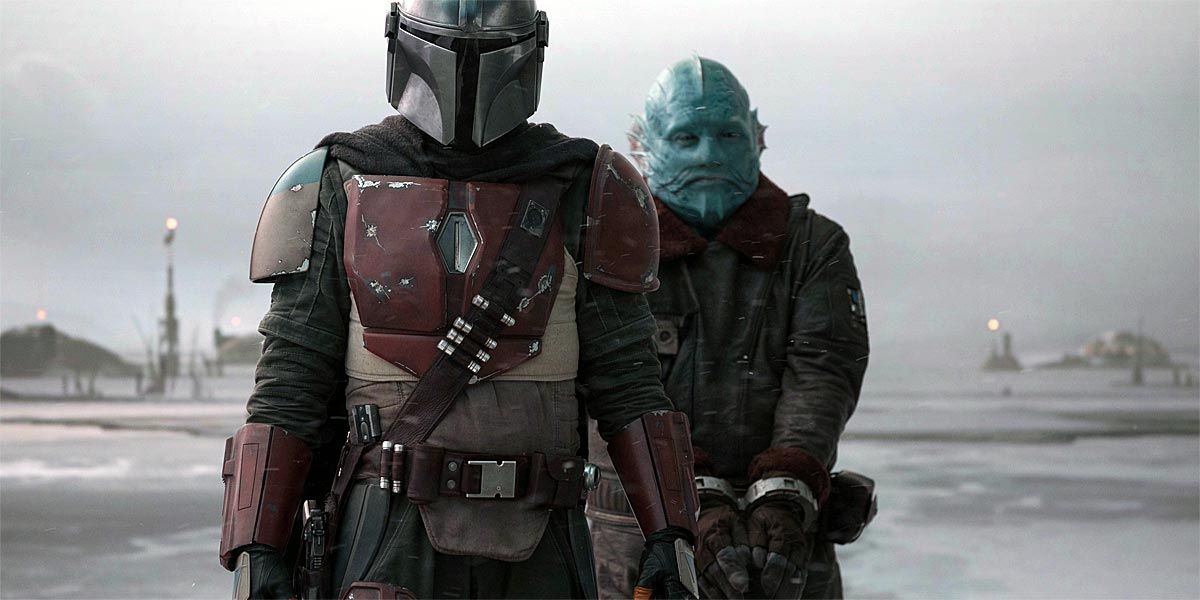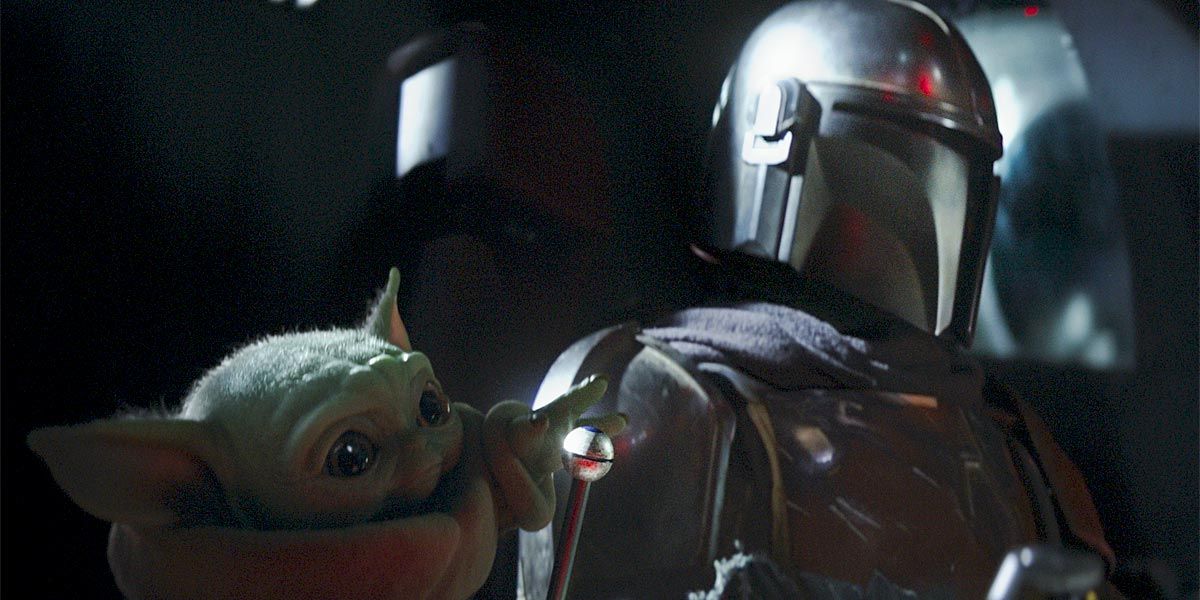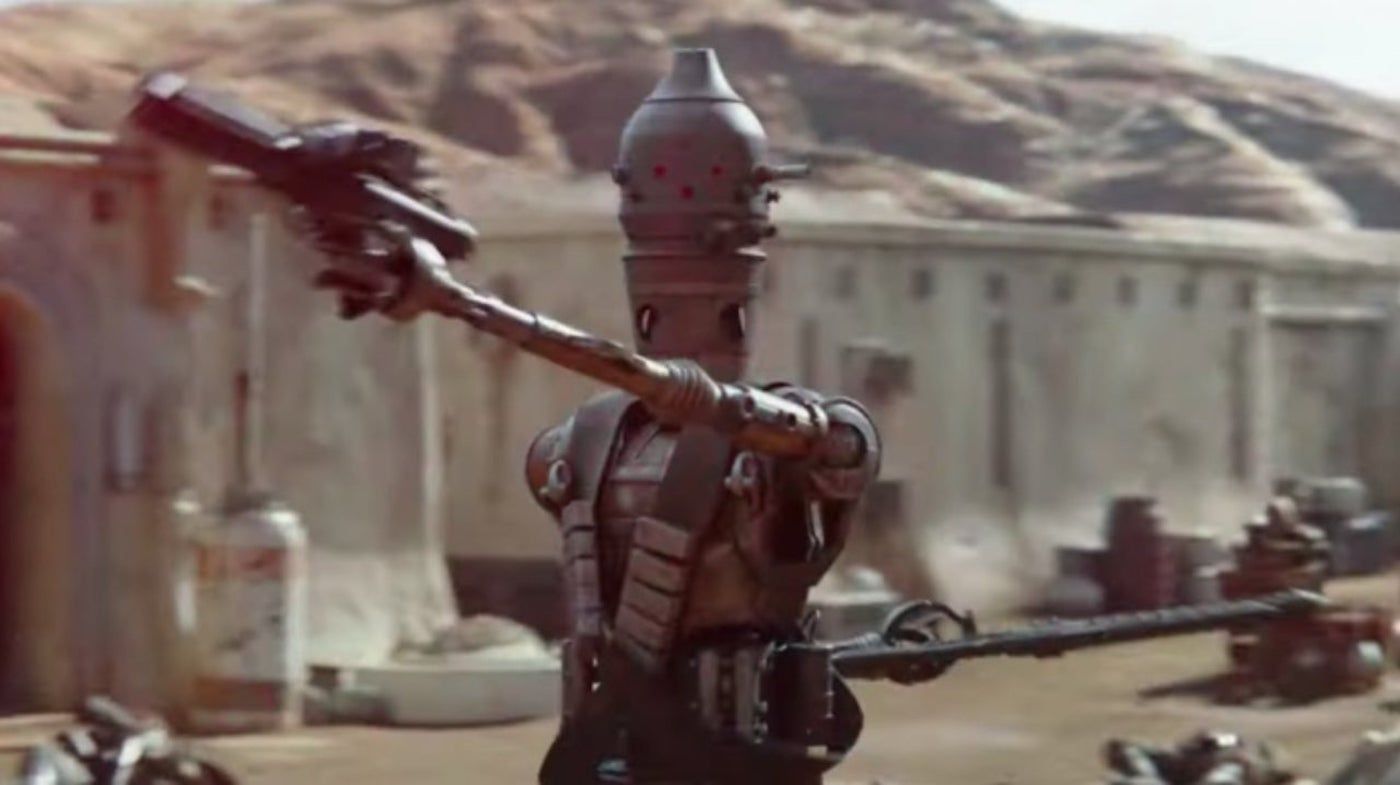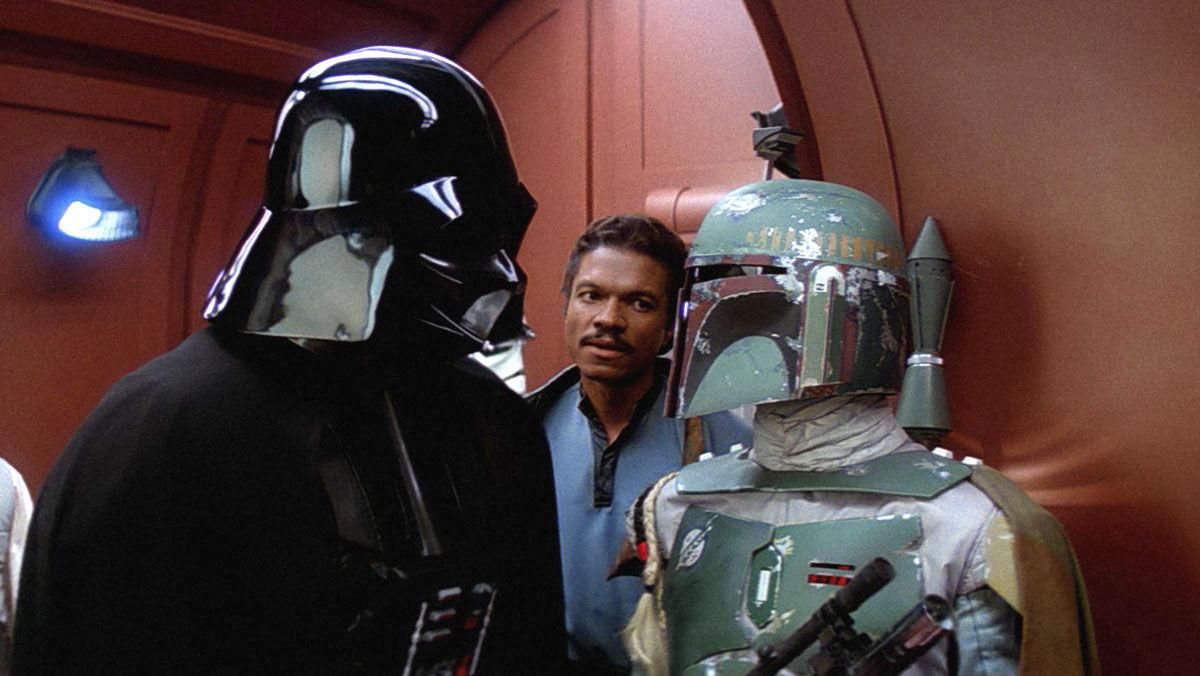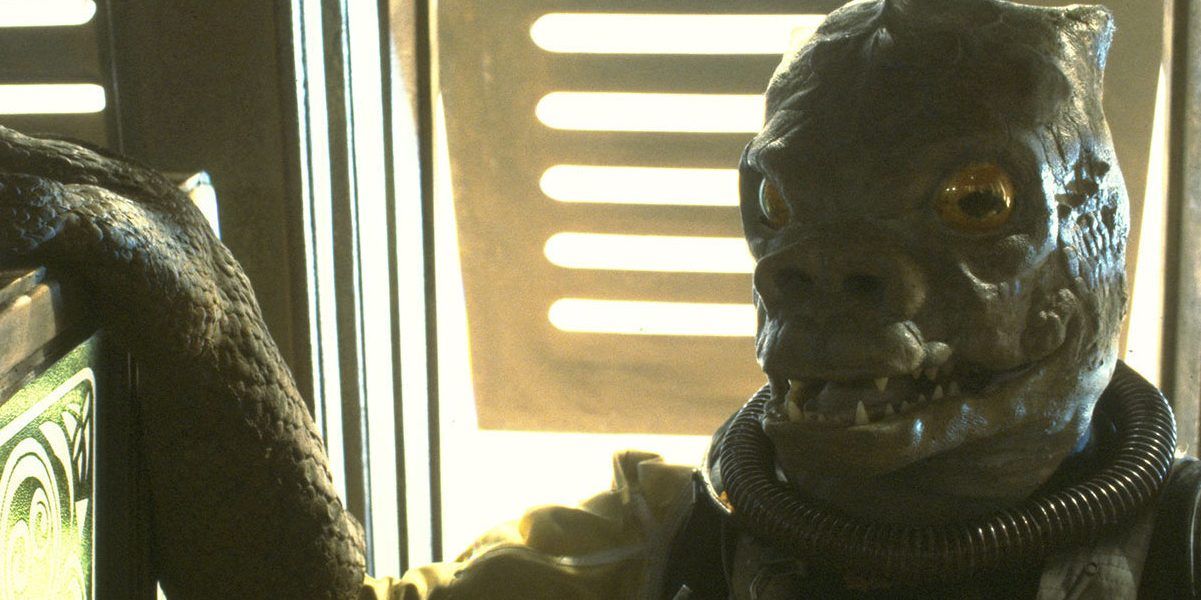WARNING: The following contains spoilers for The Mandalorian, streaming now on Disney+.
If you've been watching The Mandalorian, you've no doubt heard mention of the Bounty Hunter Code, a list of rules that govern the way bounty hunters conduct themselves when out on a mission in the Star Wars universe. In the series proper, we see that Guild members can't steal bounties from other members of the Guild and that they need to honor one another on a mission, among other conditions they all must follow.
Now, not all bounty hunters are part of the Bounty Hunter Guild (as indicated when we learn of people unwilling to pay Guild rates), but those who are skilled enough to join the Guild must follow the "Code."
WHAT IS THE CODE?
Many of the finer details of the Bounty Hunter Code were established in Star Wars canon by way of the book, The Bounty Hunter Code: From the Files of Boba Fett by Daniel Wallace, Ryder Windham, and Jason Fry. The book outlines rules and regulations all Guild members must follow, from ranking missions to the types of things they cannot do as bounty hunters.
Essentially, the Code dictates that Guild members must respect the sanctity of other bounty hunters. In the junior novel Ezra's Gamble, a spinoff book from Star Wars: Rebels featuring Bossk, two bounty hunters on the Outer Rim attempt to attack Bossk to steal his bounty. This violates the Code.
This also means that almost every episode of The Mandalorian features at least one character breaking the Code. First, IG-11 is slain. Then, in Episode 2, several Guild bounty hunters attack the title character. In Episode 3, the whole Guild then converges on the Mandalorian as he withholds their bounty after stealing it back from those who hired them.
WHO THE CODE PROTECTS
The Code, as it functions now, doesn't protect those outside the Guild. Rather, it is a code of conduct on how bounty hunters are to treat other bounty hunters. This serves a functional purpose, as it allows hunters to avoid in-fighting when on a mission. The main function of it is to allow jobs to just get done. If a bounty hunter were to just fight other bounty hunters over the same bounty and hold up the completion of the task at hand, clients would never pay anyone.
It's really a matter of efficiency since many Bounty Hunters aren't honorable warriors like Boba Fett or the Mandalorian. They are self-serving, as seen throughout The Mandalorian. The Code prevents opportunists from stealing a bounty hunter's hard work unfairly.
Once again, we see this in The Mandalorian, when several bounty hunters jump the Mandalorian to attack and rob him of Baby Yoda. This is a clear violation of Guild Rules. Many members of the Guild only seem to follow Guild protocol when convenient, but, when push comes to shove, the Code isn't as strict as, say, the laws of the Jedi Council.
THE LEGENDS CANON
The Bounty Hunters' Guild isn't very detailed in the main canon, but in the old Star Wars Legends canon, the Guild is far more fleshed out, with numerous rules applying to specific sub-guilds under the main Bounty Hunters' Guild. These sub-guilds had specific areas of specialty: Crimson Nova dealt with Jedi; House Benelex in kidnapping and retrieving bounties; House Neuvalis had a select set of clients (mostly Imperial); House Paramexor captured murderers,; House Renliss were female bounty hunters who hunted men; House Salaktori were elite bounty hunters for elite missions; House Tresario rounded up and worked in big groups; the Ragnar Syndicate used unorthodox techniques for jobs; Skine Bounty Hunter College were just the best of the best, and the Slaver Syndicate rounded up slaves.
These Houses all came with their own codes of conduct for internal use. This is due to, of all things, the Jedi demanding that the Old Republic forced the Guild in the early years of its formation to conduct themselves properly in ways that didn't put them in competition with the Jedi peacekeeping forces. But, above the individual rules and terms governing each individual House, the founders of the Bounty Hunters Guild created the Bounty Hunters' Creed.
LAWS OF THE CREED VS. LAWS OF THE CODE
The Bounty Hunters' Creed, in many ways, is remarkably similar to the current canon's Bounty Hunter Code. According to Star Wars Insider's Bounty Hunters Handbook, the Creed dictates the following rules all bounty hunters must follow.
The first rule is that "no bounty is worth dying for." If the job gets too hard, bounty hunters are allowed -- even encouraged -- to just quit the situation and fight another day. The second rule is that "people don't have bounties; only acquisitions have bounties." That is to say, the people who bounty hunters capture aren't people: they're targets. The third rule is "capture by design, kill by necessity." This is straight forward: try to bring the bounties in alive, but if things get rough, you can shoot them. The final rule that has yet to be established in the new canon is that in the hunt, "one captures or kills, never both." Which, again, is straight forward enough.
The Creed then enters into familiar territory for those familiar with the Code: "no hunter shall slay another hunter; no hunter shall interfere with another's hunt," and "no hunter shall refuse aid to another hunter."
Unless otherwise stated, it is highly possible that the Legends Creed and the new canon's Code are one and the same, due to that significant overlap in the laws binding them. Whatever the case, however, it's clear that the Code, judging by how the bounty hunters -- including Guild Leader Greef Karga -- liberally disregard it, is more a set of guidelines than actual rules.
Created by Jon Favreau, The Mandalorian stars Pedro Pascal, Gina Carano, Carl Weathers, Giancarlo Esposito, Emily Swallow, Omid Abtahi, Werner Herzog and Nick Nolte. The first three episodes are streaming now on Disney+.

